Why is a unibrow bizarre? It is ridiculous that you are promoting these judgmental beauty standards what is natural is not ugly.

Published on 4 Sep 2024
16 Bizarre Beauty Practices In Different Cultures
Fact checked
- Long neck rings - Myanmar
- Crooked teeth - Japan
- Lip plates - Ethiopia
- Ta Moko tattoos - New Zealand
- Scarification - Western Africa
- Skin whitening - Thailand
- Unibrows - Tajikistan
- Ornate hair braids – Namibia and Angola
- Sharp chiseled teeth - Malawi
- Obesity - Ethiopia
- Foot binding - China
- Black teeth - Japan
- Body painting - Ethiopia
- Facial tattoos - Morocco
- Nose plugs - India
- Dyeing armpit hair - Europe and America
Beauty is a concept that transcends boundaries, yet it is interpreted in a multitude of fascinating ways around the globe. What one culture deems beautiful might seem peculiar or even bizarre to another. Beauty standards are as diverse as the cultures that create them. While Western media often showcases a narrow view of beauty, the world is brimming with fascinating and unique ideals that challenge our conventional perceptions.
These diverse beauty ideals not only highlight the rich cultural heritage of different societies but also challenge us to broaden our understanding of what it means to be beautiful. From the elongated necks of the Kayan women in Myanmar to the cherished unibrows of Tajikistan, these unique beauty ideals offer a window into the rich tapestry of human diversity. Join us on a captivating journey as we explore some of the most extraordinary and unconventional beauty practices from different parts of the world. Discover how these cultural quirks challenge our perceptions and redefine the essence of beauty in ways you never imagined.
Long neck rings - Myanmar
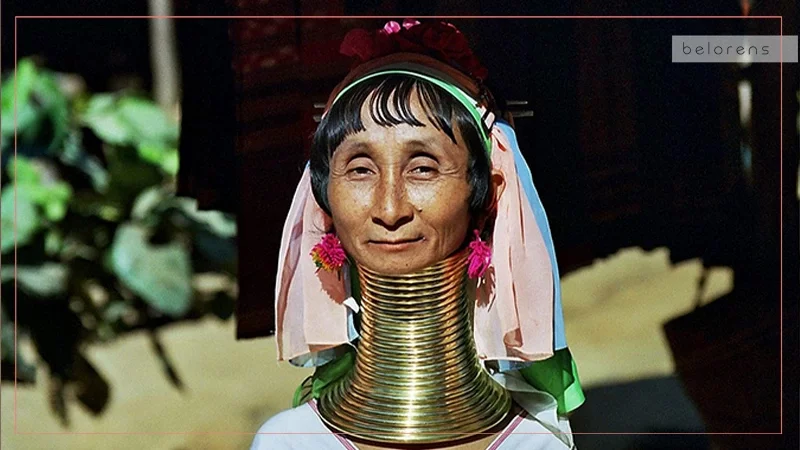
The Kayan women, part of the Karen ethnic group in Myanmar, are known for wearing brass coils around their necks from a young age. Over time, these rings push down the collarbone, creating the illusion of an elongated neck, which is considered a symbol of beauty and elegance.
The tradition of wearing long neck rings is most famously associated with the Kayan people, particularly the women of the Kayan Lahwi tribe, who are often referred to as "giraffe women" due to their distinctive practice. This unique beauty standard is both a symbol of cultural identity and an embodiment of elegance and status within the community.
Girls typically begin wearing brass coils around their necks at around five years old. The initiation into this tradition is often a ceremonial event, marking the beginning of their journey into womanhood.
Over the years, additional coils are added, gradually increasing the length and weight of the brass rings. This process continues until the desired length is achieved or the woman decides to stop. Contrary to popular belief, the neck itself does not elongate. Instead, the weight of the rings pushes down the collarbone and compresses the rib cage, creating the illusion of a longer neck.
The tradition of wearing neck rings is believed to date back centuries among the Kayan Lahwi tribe, a subgroup of the Karen ethnic group in Myanmar (Burma) and northern Thailand. The exact origin of the practice is not well-documented, but it is deeply rooted in the tribe's cultural and historical heritage.
In Kayan culture, a long neck is considered a symbol of beauty and grace. The longer the neck (or the appearance of it), the more elegant the woman is perceived to be. Historically, women with longer necks were considered more attractive and had better marriage prospects. This belief continues to influence the practice today.
Crooked teeth - Japan
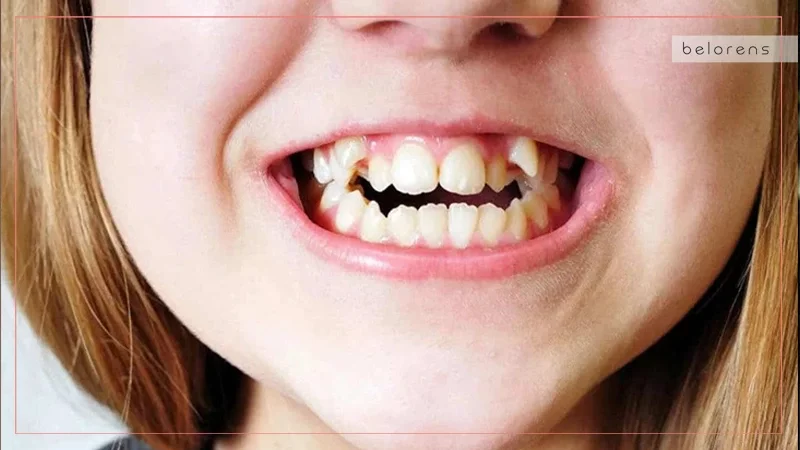
In Japan, crooked or misaligned teeth, known as "yaeba," are considered cute and youthful. In the realm of global beauty standards, Japan’s fascination with “yaeba” teeth stands out as a unique and intriguing phenomenon. The term "yaeba" (八重歯) translates to "double tooth" and refers to the appearance of slightly crooked or protruding upper canine teeth. Some women even undergo dental procedures to achieve these fang-like, ‘vampire’ teeth, as it is believed to enhance their charm and attractiveness. This beauty ideal, which might seem unusual to outsiders, is celebrated for its youthful and endearing qualities.
Yaeba teeth are often associated with a youthful, almost childlike appearance. In Japan, maintaining a sense of youthfulness is highly prized, and yaeba gives an impression of a natural, unaltered smile reminiscent of childhood.
Historically, Japan has valued different beauty standards at various times. While classical beauty ideals often emphasize symmetry and refinement, contemporary preferences have evolved to include traits that evoke a sense of youth and natural charm.
The modern fascination with yaeba teeth gained prominence in the early 2000s, significantly influenced by Japanese pop culture, particularly idols and celebrities who popularized the look.
Unlike many Western beauty standards that prioritize perfect, straight teeth, yaeba embraces imperfection. The slight misalignment is seen as a unique feature that adds character and individuality to a person’s smile.
The concept of "kawaii" (cute) is a pervasive aspect of Japanese culture, influencing everything from fashion to behavior. Yaeba teeth fit into this cultural framework, as the slightly crooked teeth enhance the overall cuteness and approachability of an individual.
Japanese idols, particularly those in girl groups, have played a significant role in popularizing yaeba. These idols often have a massive influence on beauty trends, and their fans seek to emulate their looks.
Interestingly, while some people naturally have yaeba teeth, others opt for dental procedures to achieve this look. Cosmetic dentists offer procedures where temporary or permanent veneers are applied to give the appearance of protruding canines.
Young women, in particular, have embraced this trend, visiting dental clinics specifically to get their teeth modified to achieve the yaeba look.
The procedures to create yaeba are relatively affordable compared to other cosmetic dental treatments. This accessibility has contributed to its widespread popularity among young people in Japan.
Beauty standards are always evolving, and while yaeba remains popular, there is a growing acceptance of more diverse dental aesthetics, including those influenced by Western ideals of perfectly aligned teeth.
Yaeba has garnered curiosity and interest from outside Japan. International observers often find the trend fascinating, as it challenges the dominant Western notions of dental perfection. However, there can be misunderstandings about the practice, with some perceiving it as an oddity rather than appreciating its cultural context and significance.
Lip plates - Ethiopia
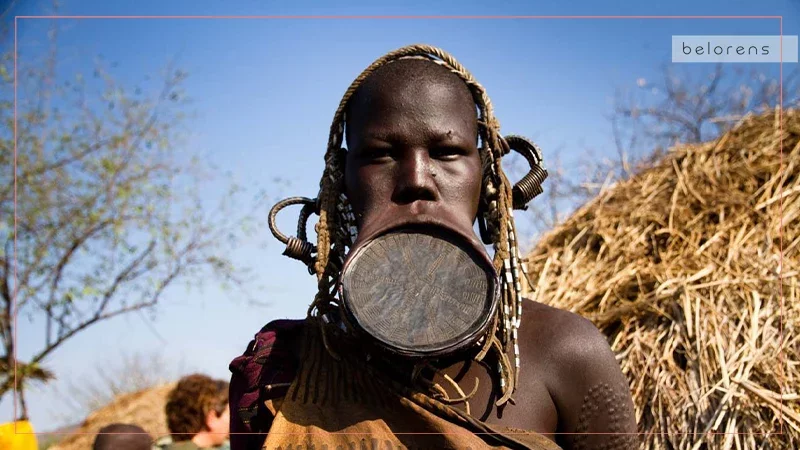
Lip plates, a striking and culturally rich practice, are most notably associated with the Mursi and Surma tribes in southern Ethiopia. These plates, inserted into the lower lips of women, serve as powerful symbols of beauty, identity, and social status.
The practice of wearing lip plates is believed to date back centuries, though its precise origins are unclear. It is a tradition passed down through generations, deeply embedded in the cultural fabric of the Mursi and Surma tribes.
For the Mursi and Surma people, lip plates are a significant mark of beauty and identity. The size of the lip plate is often directly associated with the woman's beauty and desirability. Larger lip plates indicate higher social standing and maturity. Women with larger plates are often considered more attractive and have better marriage prospects.
The insertion of the lip plate is typically part of an initiation ritual that marks the transition from girlhood to womanhood. This practice is a rite of passage that signifies a girl’s readiness for marriage and her role within the community.
Girls usually have their lower lips pierced between the ages of 15 and 18, though this can vary. The piercing is typically done by an older woman in the community. After the initial piercing, a small wooden peg is inserted to keep the hole open. This peg is gradually replaced with larger ones as the lip stretches over time. Over several months or even years, the hole is gradually enlarged to accommodate increasingly larger plates. This process can be painful and requires careful attention to avoid infection.
The plates are traditionally made from clay or wood. They are often decorated with intricate patterns, adding to their aesthetic appeal. Women must carefully maintain the plates and the surrounding skin to prevent infections and ensure the continued stretching of the lip. This involves regular cleaning and sometimes the use of herbal remedies to promote healing.
As Ethiopia modernizes, there is a growing tension between preserving traditional practices and adapting to new societal norms. Some young women choose not to continue the tradition, seeking education and opportunities outside their traditional roles.
The practice of wearing lip plates has captured the attention of people worldwide. It is often featured in documentaries, exhibitions, and articles that explore the diversity of human cultural practices. The lip plate tradition has become a significant attraction for tourists, bringing economic benefits to the community. However, this has also led to concerns about the commercialization and potential exploitation of the practice.
Ta Moko tattoos - New Zealand

Among the Maori people of New Zealand, facial tattoos called Ta Moko are considered beautiful and a sign of heritage. Each tattoo is unique and signifies the individual's social status, family history, and personal achievements.
Ta Moko is much more than body art. It is a profound expression of cultural identity, heritage, and social status. Each Ta Moko is unique, telling the wearer’s personal story and reflecting their ancestry and affiliations.
Ta Moko has been practiced by the Maori for centuries, with origins that predate European colonization. The art form is deeply rooted in the Maori’s Polynesian ancestry. Traditionally, Ta Moko was more than just decoration; it was a rite of passage that had deep spiritual and social connotations. It is a visual language that conveys the wearer’s genealogy, tribal affiliations, and personal achievements, serving as a living history etched into the skin.
There has been a significant revival of Ta Moko in recent decades, as Maori people reclaim and celebrate their cultural heritage. Wearing Ta Moko today is a powerful statement of Maori identity and cultural pride. It represents a connection to ancestry and a commitment to preserving Maori traditions. Modern Ta Moko artists strive to balance traditional practices with contemporary styles and techniques. This includes using modern tattoo machines while honoring traditional designs and symbolism.
Scarification - Western Africa
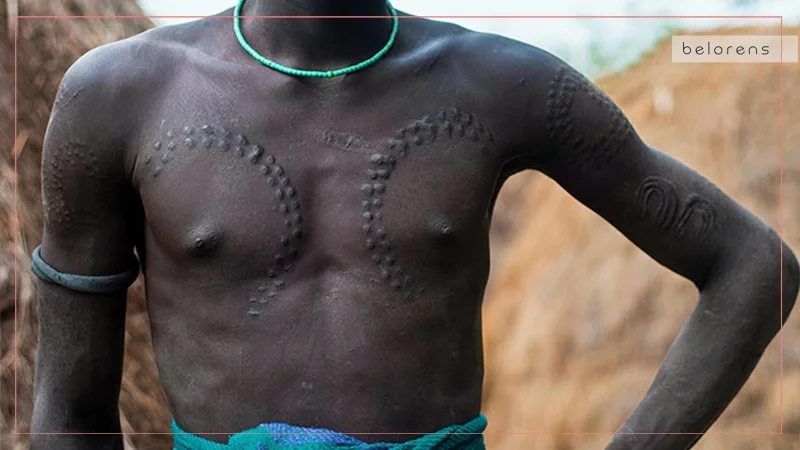
In some Western African cultures, intricate scarification patterns are a traditional beauty practice. The scars are created by cutting the skin and rubbing ash or other substances into the wound to create raised patterns. These scars are seen as marks of beauty, maturity, and social standing.
This unusual beauty practice holds profound cultural and aesthetic significance in various West African societies. This ancient art form is not merely about physical appearance; it is a deeply rooted tradition that conveys identity, social status, and personal milestones.
Scarification has been practiced for centuries among numerous ethnic groups in West Africa, including the Yoruba, Igbo, and Dinka, among others. It is a tradition that has been passed down through generations, often connected to rites of passage and social rituals. They distinguish members of one community from another and can signify belonging to a particular lineage or clan.
In many societies, the complexity and placement of scarification can indicate an individual’s social status, rank, or achievements. Chiefs, warriors, and individuals of high social standing often have more elaborate and prominent scars.
Scarification is frequently part of initiation ceremonies that mark the transition from childhood to adulthood. These rites of passage are crucial in West African cultures, signifying readiness for adult responsibilities and roles within the community.
Scars can also commemorate significant life events such as marriage, childbirth, or the attainment of certain societal roles. Each mark tells a story, encapsulating personal history and experiences.
Scarification can be achieved through various methods, including cutting the skin with a sharp instrument (like a knife or razor) or branding it with a hot tool. The goal is to create a wound that, when healed, forms a raised scar.
To enhance the appearance of scars and ensure they heal properly, traditional substances such as ash, clay, or plant-based pastes may be rubbed into the wounds. These materials can influence the final texture and prominence of the scars.
The designs used in scarification are often highly symbolic, reflecting cultural beliefs, spiritual elements, and social values. Common motifs include geometric patterns, animals, and symbols representing strength, fertility, or protection.
While scarification remains an important cultural practice in many rural areas, attitudes in urban settings are changing. Modernization, globalization, and the influence of Western beauty standards have led to a decline in the practice among younger generations.
Despite this decline, there is a growing movement among some communities and cultural advocates to preserve and revive traditional scarification practices. This revival is seen as a way to maintain cultural heritage and identity in the face of globalization.
Skin whitening - Thailand
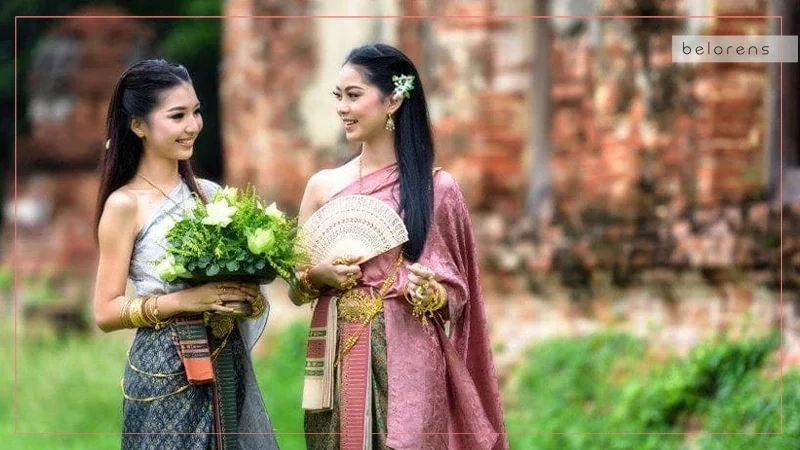
In Thailand and many other parts of Southeast Asia, fair skin is highly valued. People often use whitening products and avoid sun exposure to maintain a lighter complexion, which is associated with higher social status and beauty.
The use of whitening products in Thailand is deeply embedded in the cultural landscape and reflects broader societal attitudes towards beauty, status, and identity. This phenomenon is not unique to Thailand but is prevalent across many Asian countries, where lighter skin is often associated with attractiveness and higher social standing.
Historically, lighter skin in Thailand and many other Asian cultures has been associated with nobility and higher social status. This stems from agrarian societies where laborers working in the fields developed darker tans, while the elite, who stayed indoors, maintained lighter complexions.
In Thai culture, fair skin is often equated with beauty, purity, and refinement. This preference is reflected in traditional art and literature, where fair-skinned characters are frequently depicted as virtuous and noble. Lighter skin is also a marker of higher social status and economic prosperity. It suggests that an individual does not have to work outdoors and is thus wealthy enough to avoid manual labor.
The market for skin whitening products in Thailand is vast, encompassing a wide range of products including creams, lotions, soaps, serums, and dietary supplements. Major international brands as well as local companies dominate the market, catering to the high demand.
Also Read: All You Need to Know About Skin Tone and Undertone
Unibrows - Tajikistan
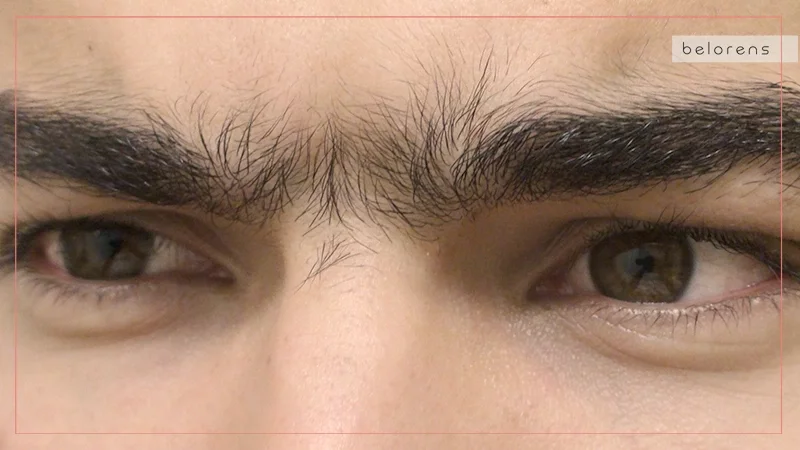
In Tajikistan, a Central Asian country rich in history and cultural traditions, unibrows are considered a sign of beauty and good luck, particularly among the Pamiri people. This beauty standard contrasts sharply with Western norms, where unibrows are often seen as undesirable.
The appreciation for unibrows in Tajikistan is rooted in ancient traditions and has been passed down through generations. This preference is particularly strong among the Tajik ethnic group, which forms the majority of the population.
The admiration for unibrows can be traced back to the Persian influence in the region, where unibrows were also seen as a sign of beauty. Tajikistan, being part of the Persian cultural sphere, inherited and preserved this aesthetic ideal.
Beyond aesthetics, unibrows are believed to bring good luck and prosperity. They are seen as an auspicious feature, adding to their desirability in the cultural context.
Usma (Isatis tinctoria), a plant with natural dyeing properties, is commonly used to darken and enhance the appearance of unibrows. Women apply the paste of usma leaves to their eyebrows to make them appear fuller and more pronounced. The process of applying usma can be part of a beauty ritual, especially during special occasions and celebrations. It is often done at home and passed down from mothers to daughters.
While traditional methods remain popular, some women also use modern cosmetics like eyebrow pencils and gels to achieve the desired look. These products help define and accentuate the unibrow, blending tradition with contemporary beauty practices.
For many women in Tajikistan, having a unibrow is a source of pride and a connection to their cultural heritage. It reinforces their identity and sense of belonging within their community. However, as Western beauty standards influence global perceptions, some women may feel conflicted about their unibrows. Younger generations, exposed to different beauty ideals through media and social networks, might experience pressure to conform to Western norms
There is a movement among some Tajiks to reaffirm traditional beauty standards and resist Western influences. This cultural revival emphasizes the importance of embracing and celebrating unique cultural traits, including the unibrow.
Ornate hair braids – Namibia and Angola
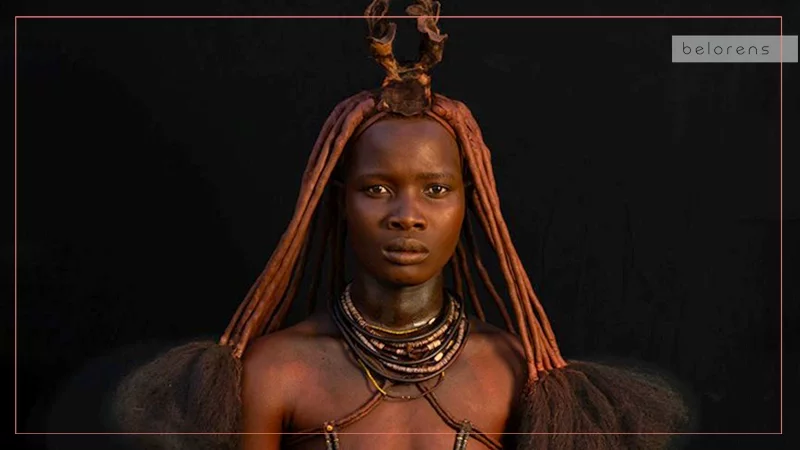
The Himba people of Namibia and Angola are renowned for their distinctive and intricate hair braiding styles, which serve as much more than mere aesthetic choices. These elaborate hairstyles are a key element of their cultural identity, symbolizing social status, age, and life stages.
Hair braiding among the Himba is a visual language that conveys important information about the individual’s age, social status, marital status, and even wealth. Each hairstyle has a specific meaning and is an essential part of Himba cultural identity.
Both men and women have distinct styles that denote different stages of life. Women’s hairstyles, in particular, are more elaborate and play a crucial role in communicating their social position and personal milestones.
The practice of hair braiding is deeply rooted in Himba traditions and has been passed down through generations. It is a way of preserving and expressing cultural heritage, maintaining continuity with the past.
Hairstyles are also tied to spiritual beliefs and rituals. For instance, certain braids and the use of red ochre are believed to have protective qualities, shielding the wearer from harm and negative influences
Himba women use a mixture of butterfat and red ochre (otjize) to coat their hair. This mixture not only gives their hair its distinctive red hue but also protects it from the harsh desert climate. Additionally, the paste symbolizes the earth’s rich, reddish soil, reflecting their connection to the land.
To create more elaborate styles, Himba women often incorporate extensions made from goat hair or synthetic materials. These extensions are braided into their natural hair and adorned with beads, shells, and other decorative elements.
Young girls typically wear two thick braids called ozondato, which hang forward over their faces. These braids indicate that they are not yet of marriageable age.
As they approach puberty, girls’ hairstyles become more intricate, with multiple braids signifying their transition to adulthood. When they reach puberty, their hair is often covered with a headdress made from animal skin.
Married women have more elaborate styles that can include many braids styled upwards and coated with otjize. The more complex the hairstyle, the higher the woman’s status within the community.
Himba men usually have simpler styles, such as a single plait called ondatu, which runs from the forehead to the nape of the neck. After marriage, men wear a turban-like headdress that is rarely removed, indicating their marital status.
The process of hair braiding is often a communal activity, with female relatives and friends gathering to assist and celebrate the occasion. This strengthens social bonds and reinforces community ties. Maintaining these hairstyles requires significant time and effort. Women regularly reapply otjize to keep their hair and skin protected and to preserve the vivid red color that is central to their beauty standards.
Sharp chiseled teeth - Malawi
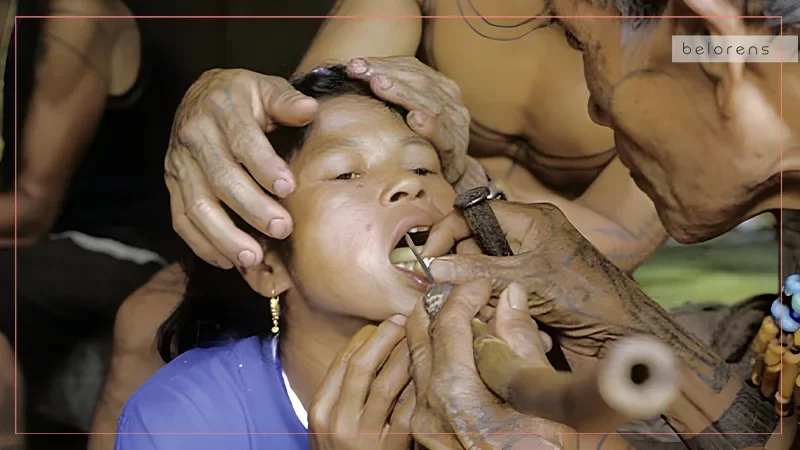
In certain regions of Malawi, the practice of chiseling teeth into sharp points is a traditional beauty custom that holds deep cultural significance. This practice, which involves filing the teeth to create a jagged, pointed appearance, is both an aesthetic and a social marker.
The practice of chiseled teeth can be traced back to ancient times among some ethnic groups in Malawi, such as the Yao and Makonde. It is believed to have originated as part of tribal customs and rites of passage. Traditionally, sharp teeth were seen as a symbol of courage, strength, and readiness for adulthood. The process of chiseling, which is painful and requires endurance, was considered a test of bravery.
Chiseling teeth often marks significant transitions in an individual’s life, such as reaching puberty or preparing for marriage. It serves as a rite of passage, signifying the individual’s readiness to assume adult responsibilities.
The process involves using primitive tools, such as a file or a chisel, to manually shape the teeth into points. This is typically done by a skilled practitioner within the community who has experience with the procedure. Achieving the desired aesthetic involves carefully filing the teeth to ensure symmetry and precision. The teeth are shaped to be evenly pointed, creating a distinct and recognizable appearance.
The specific style and extent of chiseling can vary between different ethnic groups and regions. Some communities may prefer more dramatic and pronounced points, while others opt for subtler modifications.
Individuals with chiseled teeth may enjoy enhanced social status and recognition within their community. The procedure is often associated with beauty, maturity, and social acceptance. For those who undergo the procedure, chiseled teeth can be a source of pride and confidence. It reflects their commitment to cultural traditions and their ability to endure hardship.
Exposure to Western beauty standards and modern dental practices has influenced attitudes towards chiseled teeth. Younger generations, especially those in urban areas, may view the practice as outdated or harmful.
Despite these influences, there is a movement among some communities to preserve and celebrate traditional customs, including teeth chiseling. This revival is seen as a way to maintain cultural heritage and identity.
Obesity - Ethiopia
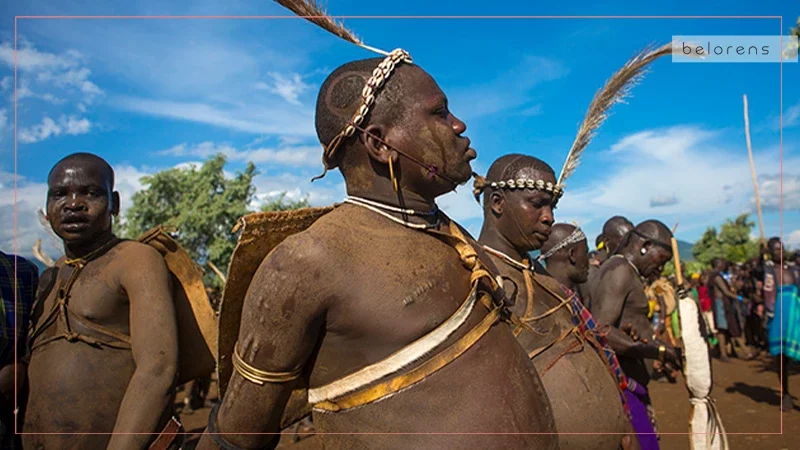
In the Omo Valley of Ethiopia, the Bodi tribe practices a unique and culturally significant tradition that revolves around obesity as a symbol of beauty, strength, and social status. This tradition is most prominently displayed during the Ka’el ceremony, an annual event that honors the tribe’s ideals of masculinity and fertility.
The Bodi tribe's emphasis on body size is linked to their agrarian lifestyle. Livestock, especially cattle, play a central role in their economy and daily life. The ability to consume large quantities of milk and blood from their cattle is seen as a sign of wealth and prosperity.
Historically, in many cultures, body size has been associated with wealth and abundance. For the Bodi, a large body signifies access to ample resources and the capacity to sustain oneself and one's family.
Within the Bodi tribe, obesity is particularly celebrated among men. It is considered a marker of masculinity, fertility, and strength. The larger a man’s body, the more respect and admiration he commands within the community.
The Ka’el ceremony, held annually, is the pinnacle of this cultural tradition, where young men compete to gain the most weight in a six-month period. The preparation for the Ka’el ceremony begins six months in advance. Selected young men, usually bachelors, enter a period of seclusion and are fed a special diet to maximize weight gain. This diet primarily consists of a mixture of cow’s milk and blood, consumed in large quantities.
During this period, the men are confined to their huts, minimizing physical activity to ensure maximum weight gain. Family members and friends support them by providing the necessary food and care.
On the day of the Ka’el ceremony, the fattened men emerge from their huts and present themselves to the community. They are adorned with traditional ornaments and body paint, highlighting their enlarged physiques.
The community gathers to celebrate and judge the contestants. The man who has gained the most weight and exhibits the most impressive physique is declared the winner, earning great honor and respect. This title comes with significant social prestige and sometimes material rewards.
Participating in the fattening process and the Ka’el ceremony can boost self-esteem and pride of the young men involved. It is a significant achievement and a demonstration of their dedication and endurance. However, there is also considerable pressure to conform to this cultural ideal. Young men may feel obligated to participate and meet the expectations of their families and community.
As the Bodi tribe encounters more external influences through tourism and media, there are changing attitudes toward traditional practices. Younger generations may be influenced by global beauty standards and health perspectives.
Foot binding - China
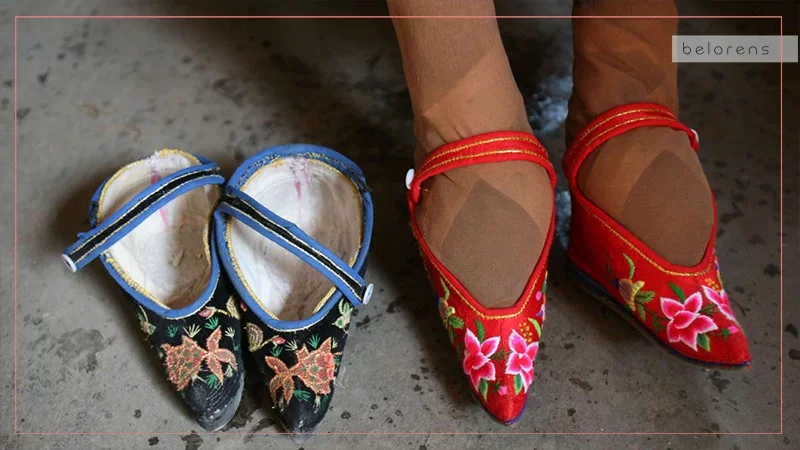
Foot binding, a deeply ingrained cultural practice in China, spanned over a millennium before its decline in the early 20th century. This tradition, involving the painful and permanent alteration of young girls' feet, was once a widespread symbol of beauty, status, and femininity.
Foot binding is believed to have originated during the Tang Dynasty (618–907 AD), gaining popularity during the Song Dynasty (960–1279 AD). The practice started in the imperial court and gradually spread to the broader society.
Initially, foot binding was a marker of elite status and wealth, as only wealthy families could afford the luxury of having daughters who didn't need to work and could have their feet bound.
Small, delicate feet, often referred to as "lotus feet," became the epitome of feminine beauty. The ideal foot length was around 3 inches, called the "golden lotus."
Bound feet significantly influenced marriage prospects. Girls with smaller, well-bound feet were considered more desirable brides, as they were seen as more graceful and refined.
Foot binding was also a sign of a girl's discipline and obedience, key virtues in Confucian society. It demonstrated her ability to endure pain and her willingness to conform to societal expectations.
Foot binding typically began between ages 4 and 9, when the bones were still soft and pliable. The process started in autumn or winter, as colder temperatures were thought to help numb the pain.
The toes (except the big toe) were curled under the foot and tightly bound with long strips of cloth. The arch was broken to force the foot into a smaller, curved shape. This process required regular re-binding and tightening over several years to achieve the desired shape.پ
The process was excruciating and often led to infections, poor circulation, and lifelong disability. Maintaining bound feet required meticulous care to prevent severe complications and odor due to poor hygiene.
Women with bound feet wore specially crafted shoes and socks. These shoes, often richly embroidered, were designed to accentuate the small size and delicate appearance of their feet.
Foot binding was not just about the size but also about the shape and appearance. Women and their families took great pride in the beauty of the bound feet, which were kept hidden and only revealed to close family or husbands.
Foot binding was seen as a way for families, especially those from lower classes, to improve their social standing through advantageous marriages.
The practice reinforced gender roles, with women’s mobility and autonomy severely restricted. Bound feet limited a woman's ability to move freely, reinforcing the ideal of a demure, domestic woman.
Many women took pride in their bound feet as a cultural norm and a sign of their beauty and virtue. For many, it was a source of social status and identity.
Despite the pride, the physical pain and disability caused by foot binding had profound emotional and psychological effects, often leading to feelings of helplessness and dependency.
The arrival of Western missionaries and reformers in the 19th and early 20th centuries brought increased scrutiny and criticism of foot binding. They highlighted the practice’s cruelty and health consequences, advocating for its abolition.
Chinese intellectuals and reformers during the late Qing Dynasty and early Republican era began to criticize foot binding as a backward practice incompatible with modern national progress. The Chinese government officially banned foot binding in the early 20th century. Efforts to enforce the ban were met with resistance initially, but gradually the practice diminished as societal attitudes shifted.
Today, foot binding is remembered as a complex tradition with profound cultural, social, and individual impacts. It serves as a stark reminder of how beauty standards and cultural practices can shape and, at times, harm individual lives.
Black teeth - Japan

Ohaguro, the practice of dyeing teeth black, was a significant cultural tradition in Japan that symbolized beauty, maturity, and social status. Predominantly observed from the Heian period through the late 19th century, this unique custom held deep-rooted cultural meanings and was practiced by both men and women.
The practice of ohaguro is believed to have begun during the Heian period. Initially, it was practiced by aristocrats and the imperial court as a mark of beauty and sophistication.
During the feudal period, ohaguro became widespread among samurai families and the upper classes. It was especially prominent among married women, signifying their marital status and maturity.
Ohaguro became more accessible to the merchant class during the Edo period. It was common among married women, young girls undergoing rites of passage, and some men, particularly those of high status.
Blackened teeth were considered a symbol of beauty and elegance. The contrast between white skin and black teeth was highly prized.
For women, ohaguro signified maturity and readiness for marriage. It also represented fidelity to their husbands, as the practice was often associated with married women.
The black dye used in ohaguro was made from a mixture of iron filings, vinegar, tea, sake, and sometimes gallnut. This concoction, known as kanemizu, would react to create a black stain on the teeth.
The mixture was applied to the teeth using a small brush. To maintain the color, it had to be reapplied every few days, as the dye would wear off over time.
Ohaguro became a daily beauty ritual for many women, involving regular preparation and application of the dye.
Ohaguro was an important aspect of Japanese cultural identity, particularly for women. It reinforced their roles within the family and society.
The arrival of Western influences in the late 19th century led to changing beauty standards. White teeth became associated with modernity and health.
During the Meiji Restoration, Japan underwent significant modernization and Westernization. Ohaguro was officially banned by the government as part of efforts to modernize and align with Western aesthetics. Today, ohaguro is remembered as a unique cultural tradition that reflects the changing notions of beauty and societal norms in Japan.
Body painting - Ethiopia
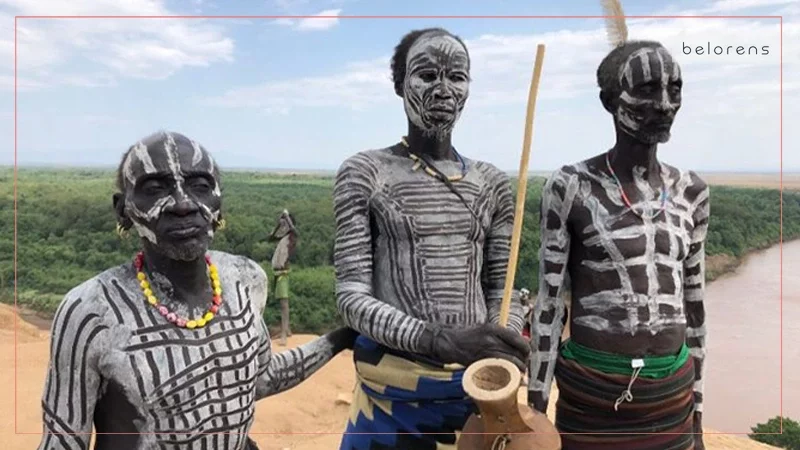
The Karo tribe, one of the smallest ethnic groups in Ethiopia's Omo Valley, is renowned for its elaborate body painting practices. This art form is not only a display of beauty but also a powerful expression of cultural identity, social status, and ritual significance.
Body painting among the Karo people has deep historical roots, intertwined with the tribe's traditions and way of life. The practice has been passed down through generations, maintaining its significance over time.
Traditionally, body painting is integral to various ceremonies, including rites of passage, weddings, and harvest festivals. It is a way to honor ancestors, appease spirits, and mark significant life events.
For the Karo, body painting is a symbol of beauty and aesthetic excellence. The intricate designs and vibrant colors enhance the natural features of the body, transforming individuals into living works of art.
Body painting serves as a visual language that communicates social status, age, and marital status. Different patterns and colors have specific meanings and signify an individual’s place within the tribe.
The Karo use natural materials for their body paint, including white chalk, red ochre, yellow mineral rock, charcoal, and cattle dung. These elements are mixed with water or animal fat to create the desired consistency.
Body painting is a communal activity, often involving family members or friends. The process can take several hours, depending on the complexity of the designs. Painting is done using fingers, sticks, feathers, and other simple tools.
Common designs include geometric shapes, dots, lines, and swirls. These patterns are often symmetrical and meticulously crafted, covering the face, torso, and limbs. Some designs incorporate symbolic imagery, such as representations of animals, plants, or celestial bodies. These motifs can carry specific meanings related to the tribe’s beliefs and environment.
For individuals, body painting is a form of self-expression and a way to enhance personal appearance. It allows them to express their creativity and individuality within the framework of traditional designs.
The Karo tribe faces the challenge of balancing the preservation of their cultural heritage with the influences of modernity. Efforts are focused on ensuring that body painting remains a living tradition that evolves while retaining its core significance.
Facial tattoos - Morocco
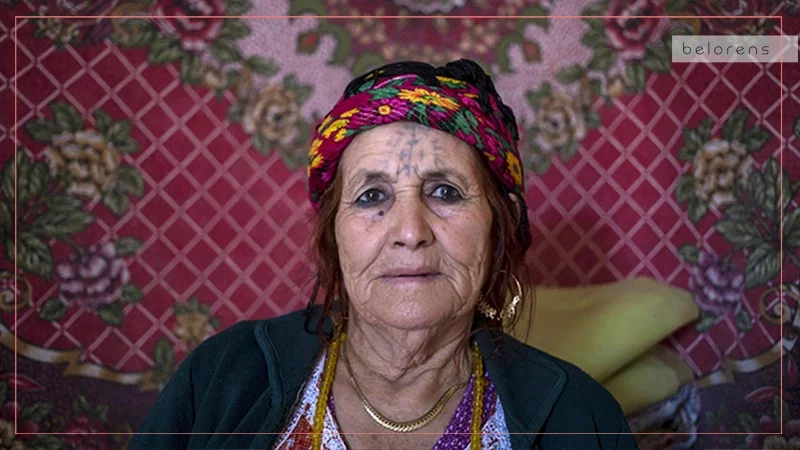
Facial tattoos, a significant cultural practice among certain communities in Morocco, reflect a deep history of identity, beauty, and social cohesion. This art form, rich in symbolism and tradition, has been both celebrated and challenged over the centuries.
Facial tattoos in Morocco have ancient origins, with evidence of their practice dating back to the pre-Islamic era. The art of tattooing has been a part of Berber culture for centuries, serving as a medium for cultural expression and personal identity.
The Berbers, the indigenous people of North Africa, played a crucial role in the tradition of facial tattooing. The practice was prominent among Berber women, symbolizing various aspects of their identity, heritage, and spiritual beliefs.
In traditional Moroccan culture, facial tattoos were considered a mark of beauty and grace. Intricate designs were applied to enhance a person’s appearance and to signify cultural pride.
Facial tattoos were often part of a rite of passage for young women. The process of getting tattooed was linked to reaching adulthood, and the designs served as a celebration of this important life transition.
Tattoos were a way for individuals to express their Berber heritage and maintain a connection to their ancestors. The designs often included symbols and patterns that represented the wearer’s family, tribe, and personal history.
The ink used for facial tattoos was typically made from natural ingredients. Black pigment was derived from the soot of burnt olive oil, mixed with other natural substances like henna for color and consistency.
Tattooing was performed using simple tools, such as needles made from thorns or bones. The process involved pricking the skin and inserting the ink, a technique that was often painful but carried significant cultural meaning.
Facial tattoos were a visible expression of a person’s place within their community. They signified a connection to Berber traditions and were a way to celebrate and affirm cultural identity.
Tattoos could indicate social status, marital status, or even personal achievements. They were markers of respect and acknowledgment within the community. For many women, getting a facial tattoo was a source of pride and a significant achievement. It was a way to demonstrate bravery and resilience.
In modern Morocco, traditional facial tattoos are less common due to changing beauty standards and the influence of global culture. Western beauty ideals and perceptions of tattoos have shifted the cultural landscape.
Despite declining popularity, there is a growing movement to revive and preserve the tradition of facial tattoos. Cultural preservationists and artists work to keep the tradition alive through education, exhibitions, and cultural events.
Nose plugs - India

In the remote Ziro Valley of Arunachal Pradesh, India, the Apatani women have long been known for their distinctive and culturally significant nose plugs. These traditional adornments are not merely decorative but are deeply woven into the fabric of Apatani identity, beauty, and social structure.
The practice of wearing nose plugs among the Apatani tribe dates back several centuries. The Apatani people, who inhabit the Ziro Valley, have maintained this tradition as a central element of their cultural identity.
Nose plugs, known locally as "Yaping Hullo," have been a longstanding symbol of beauty, social status, and tribal heritage among Apatani women. In Apatani culture, the nose plugs are considered a vital aspect of feminine beauty. They are designed to enhance the wearer's appearance and signify cultural pride.
The nose plugs are a marker of ethnic identity and are worn to distinguish Apatani women from other tribal groups. The design and craftsmanship of the nose plugs serve as a testament to Apatani traditions and artistry. Many Apatani women take great pride in wearing their nose plugs. The practice is seen as a mark of beauty and a testament to their adherence to cultural norms.
Historically, nose plugs were made from a variety of materials including wood, brass, and bone. In recent years, modern adaptations might use metal or plastic, but traditional materials are still preferred for their cultural significance. The size and design of the nose plugs could reflect the wearer’s social status, age, and marital status within the community.
The nose plugs are handmade by local artisans. The crafting process involves shaping and carving materials into intricate designs that often feature geometric patterns and natural motifs.
The traditional nose plugs feature a range of designs, from simple wooden plugs to elaborate metal ones with engravings. The most common designs include flat, circular, or slightly convex shapes adorned with decorative patterns.
Some nose plugs are embellished with intricate carvings, which can include motifs like spirals, flowers, and other natural forms. These designs are not only aesthetic but also convey cultural meanings and personal status.
The process of getting a nose plug is often associated with significant life events, such as reaching adulthood or marriage. It is a ritual that carries emotional and personal significance for the wearer.
To wear the nose plug, a small incision is made in the septum of the nose. The plug is then inserted and held in place by the natural structure of the nose
The influence of modernity and external cultures has led to changing beauty standards in the Ziro Valley. Younger generations may be less inclined to adopt traditional practices, including wearing nose plugs. Despite modern influences, the tradition of wearing nose plugs continues in various forms. Community members uphold the practice as a symbol of their identity and cultural pride.
Dyeing armpit hair - Europe and America
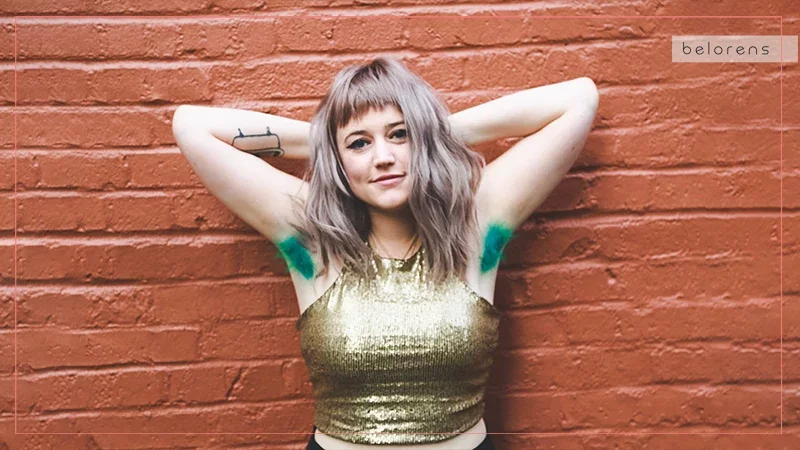
In recent years, the trend of dyeing armpit hair has emerged as a bold statement of beauty, self-expression, and defiance against conventional norms in Europe and America. This modern beauty practice, which might seem unusual at first glance, reflects deeper cultural shifts and personal motivations.
Historically, armpit hair has been a symbol of natural beauty and personal grooming standards. In many Western cultures, its removal was considered a norm for women, driven by beauty standards that prioritized smooth, hairless skin.
The early 20th century saw the rise of hair removal trends, largely influenced by advertisements and media that idealized hairless bodies. This era established the norm of removing body hair as a beauty standard for women.
The early 2000s began to see a shift towards more diverse beauty standards. With the rise of the body positivity movement and a push for greater acceptance of natural bodies, the idea of embracing body hair gained traction.
By the 2010s, dyeing armpit hair became a popular trend, particularly among younger generations. It represented a form of rebellion against traditional beauty norms and an embrace of personal expression.
For many, this trend is a way to reclaim their bodies from societal expectations. It signifies empowerment through defiance of conventional beauty standards and the celebration of individuality.
The body positivity movement, which promotes self-love and acceptance of natural bodies, has played a significant role in the rise of armpit hair dyeing. This movement encourages people to embrace their bodies as they are and to express themselves freely.
The trend also intersects with discussions about gender fluidity and non-binary identities. Dyeing armpit hair can be a way to challenge traditional gender norms and express a spectrum of gender identities.
By choosing to dye armpit hair, individuals are making a statement against mainstream beauty ideals. It’s an act of rebellion that challenges norms about what is considered attractive or acceptable.
Publicly displaying dyed armpit hair can be a form of activism, raising awareness about body hair politics and encouraging conversations about body autonomy and beauty standards.
People choose between temporary dyes (like hair chalk or spray) and permanent dyes (such as semi-permanent hair color). Temporary dyes are often used for short-term changes or experimentation, while permanent dyes offer a more lasting commitment.
While some people opt for DIY methods at home using hair dye kits, others prefer professional salons for more elaborate designs.
Bright, neon colors are popular choices for armpit hair dyeing. Colors like pink, blue, green, and purple are frequently chosen for their eye-catching appeal.
Social media platforms play a significant role in the popularity of this trend. Influencers and celebrities who showcase dyed armpit hair contribute to its mainstream acceptance and inspire others to explore the trend.
Social media platforms play a significant role in the popularity of this trend. Influencers and celebrities who showcase dyed armpit hair contribute to its mainstream acceptance and inspire others to explore the trend.
For many, dyeing armpit hair boosts self-esteem and confidence. It allows individuals to take ownership of their bodies and express themselves in ways that feel authentic and liberating.
Despite growing acceptance, there remains a stigma associated with visible body hair. People who choose to dye their armpit hair might face judgment or criticism from those who adhere to traditional beauty standards.
The trend of dyeing armpit hair may continue to evolve as beauty standards shift. While it is a current trend, it reflects broader societal changes towards body positivity and individual expression. The success of the armpit hair dyeing trend may pave the way for other unconventional beauty practices. It demonstrates that beauty standards are fluid and that there is room for diverse expressions of self.




